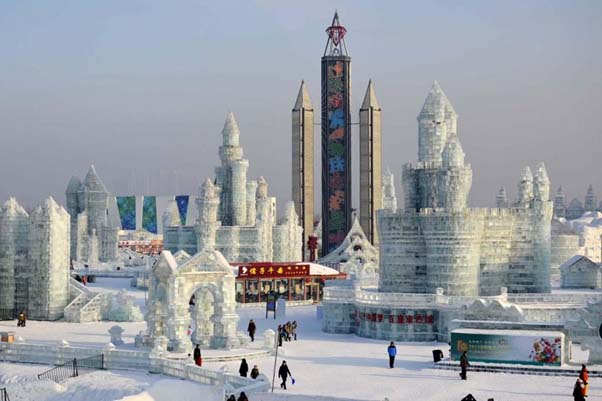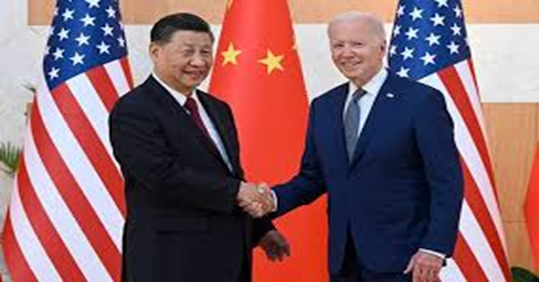GENDER QUOTAS IN THE SOUTH ASIAN CONTEXT
Posted on : November 3, 2023Author : Ahana Roy

The passing of the Women’s Reservation Bill in India this September, twenty seven years after it was first introduced has once again brought to the forefront the pertinent and running issue of women’s representation in politics in general and reservations in particular. The understanding of women as an undifferentiated, homogenous category and their abilityto representa unified, women’s perspective has been brought into question, and correctly so. Anne Phillips explores the distinction between politics of ideas and politics of presence, where the contestation is around the focus of representation- whether the issue, ideology or ‘what’ is being represented is to be given priority over ‘who’ does the representation. The politics of presence gives higher value to shared experience andnecessitatesthat representatives mirror characteristics of those represented.[1]Nivedita Menon criticizes the neat dichotomy between the two, stating that identity does not exist independently of ideology and is created and mobilized in and through politics.[2]
The presence of strong and popular women leaders in the nation states of South Asia from the very onset of their creation gives the illusion that the glass ceiling has been broken and women have equal access to political spaces and leadership positions within it. However the overall political participation of women still lags much behind.The percentage of women in national parliaments of South Asia have been dismally low, with India, Bangladesh, Pakistan, Afghanistan, Maldives and Bhutan recording numbers lower than the global average of 26.5%, with only Nepal achieving the 30% critical mass of female parliamentarians.[3]SDG 5.5 aims to ensure women’s full and effective participation and equal opportunities for leadership at all levels of decision making in political, economic and public life. Other international and national documents such as the CEDAW also have similar targets, and nations that are signatories to these need to implement mechanisms to bring about transformation. Decades of women’s movements demanding for voice and visibility, sectional party interests, shifting nature of political systems and normative pressure to follow international democratization trends have together culminated into demands for greater women’s representation in politics and is the context in which reservations become crucial.
Quotas alone are rarely enough to bring positive change in women’s position because of the presence of structural barriers and inequalities and because it often allows monopolization by sub-elites within the marginalized group, and need to be bolstered by other supportive measures. Yet, quotas can be seen as affirmative actions to ‘fast-track’ women into politics.[4]These are ‘preferential’ corrective legislations or accelerating measures to create an equal and just society for women by recognizing their presence explicitly and an acknowledgment of their historical social and political exclusion.[5]Quotas can be of several kinds including legislated candidate quotas, legislated reserved seats and voluntary political party quotas. Here we focus only on the second kind.
The examples of Nepal, Bangladesh and Pakistan are particularly important here as they comprise the only South Asian states that have functioning gender quotas in their parliaments. The interim constitution of Nepal promulgated in 2007 provided for the proportional representation of women in the parliament, with the finalized constitution requiring that at least one third of the Federal Parliament be comprised of women.[6]Similarly, in the National Assembly of Pakistan, 60 seats were added to the directly elected seats and allocated to parties in proportion of their results in the general election.[7]In Bangladesh, the quota system was first introduced in 1972, with 15 seats reserved for women, which has been subsequently enlarged. Presently, the reservation for women members of Parliament at the national level is 50 seats out of a total of 350 seats as per the 15th Amendment to the Constitution. It is worth mentioning here that Afghanistan had similar provisions for reservation of seats for women in the upper house as well as at sub-national levels, however these provisions have since been scrapped by the new Taliban government.
Introduction of the quotas for women in these countries has led to a shift in policy priorities. The examples listed here as well as those in other parts of the world indicate that having more women in legislative institutions results in more gender-friendly policies with more social funding on issues related to women, children and social protection. In the Pakistani parliament, Majlis-E-Shoora, private member’s bills introduced by women alone or in a group heavily prioritized issues that affected women, children and vulnerable groups compared to bills introduced by groups that included men. Women MPs also tend to strategically use femininity and motherhood, emphasizing the caring, compassionate and humane qualities of women as something that sets them apart from their male counterparts. At the same time, once in power women resist being relegated to the “politics of care”. This problem is accentuated by the voting systems in place in Bangladesh and Pakistan, where quotas for women consist of reserved seats allocated on the basis of party lists and the proportion of votes the respective party wins. As a result, women elected on the basis of reserved seats do not have a territorial constituency, limiting their ability to build patron-client relationships. Women in general also poll lower than men, effectively making quotas their only prospect at getting elected.[8]Furthermore, those who are nominated are likely to have connections to the party leadership, making it exceedingly difficult for women not related to politicians to directly contest and win elections. (Chowdhury) As a result of their dependency, women elected through quotas are bound to be under stronger influence from their party, and are often accused of being the lackeys of party leaders, since they cannot rely on the direct vote of the people. Additionally, women’s wings within these parties are not considered at par with the rest of the party, and their issues are generally marginalised in favour of more ‘important’ party matters.[9]The party system also has negative implications for women’s ability to form a caucus that cuts across party lines, impeding their ability to mobilise and push forward bipartisan legislation. As Anne Phillips says, with the presence of larger proportions of women in politics, they would find it easier to transcend party lines and speak more comfortably as a unified group with certain commonality in their outlook.
Objections have been raised against these quotas for extending dynastic politics to women, which even if true, is not limited to women but a general characteristic of South Asian politics.[10]Undifferentiated reservations for women, without considerations of caste, class or religious marginalization would, however ensure reproduction and reinforcement of existing inequalities and power dynamics.[11]In light of these criticisms, it is essential to chalk out the best form of affirmative actions for women depending upon national contexts and create substantial ways of holding them up. The reservation of seats for women should be a moral imperative for states which have political equality enshrined as a tenet in their constitutions. Creating spaces for women in mainstream politics as a step to establish formal legal equality is absolutely essential to close the gender gap and move towards an egalitarian society.
[1]Anne Phillips, “Dealing With Difference: A Politics of Ideas Or A Politics of Presence?,” Constellations 1 (October 27, 2006): 88–91, https://doi.org/10.1111/j.1467-8675.1994.tb00005.x.
[2]Nivedita Menon, “Elusive ‘Woman’: Feminism and Women’s Reservation Bill,” Economic and Political Weekly 35, no. 43/44 (2000): 3835–44.
[3]“Country Data | International IDEA,” accessed November 2, 2023, https://www.idea.int/data-tools/data/gender-quotas-database/country?country=19.
[4]Tan, “Are Gender Quotas Helping Female Politicians in Asia?,” East Asia Forum, June 24, 2016, https://www.eastasiaforum.org/2016/06/24/are-gender-quotas-helping-female-politicians-in-asia/.
[5]Shirin M. Rai and Kumud Sharma, “Democratising the Indian Parliament: The ‘Reservation for Women’ Debate,” in International Perspectives on Gender and Democratisation, Women’s Studies at York (Macmillan Press Ltd, 2000), 149–65, https://doi.org/10.1007/978-1-349-62879-7.
[6]Reena Burathoki, “The Quota Story: Reservation for Women in Parliament of Nepal” (Barcelona, Central European University, 2020).
[7]Virginie Dutoya, “From Women’s Quota to ‘Women’s Politics’: The Impact of Gender Quotas on Political Representations and Practices in the Pakistani National Parliament,” Femina Politica – Zeitschrift Für Feministische Politikwissenschaft 22, no. 2 (2013): 17–34.
[8]Burathoki, “The Quota Story: Reservation for Women in Parliament of Nepal.”
[9]Dutoya, “From Women’s Quota to ‘Women’s Politics.’”
[10]Gail Omvedt, “Women in Governance in South Asia,” Economic and Political Weekly 40, no. 44/45 (2005): 4746–52.
[11]Mallikarjun I Minch, “Women and Politics,” The Indian Journal of Political Science 73, no. 3 (2012): 489–92.
Ahana Roy
Intern, Asia in Global Affairs
The originality of the content and the opinions expressed within the content are solely the author’s and do not reflect the opinions and beliefs of the website.




